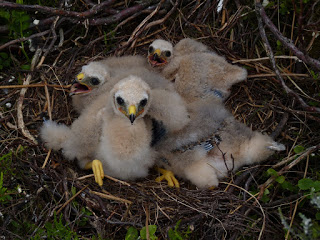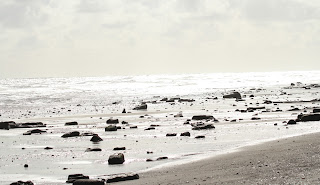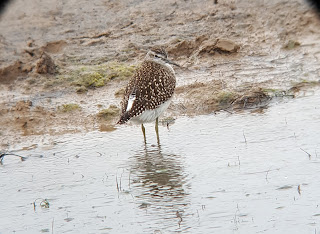Well I think we can all agree that 2016 has been quite a year…
Looking back over my blog and notebooks from this year, I can see I have been more focused with my time than in previous years. This was always going to be the case as school work ramps up and I can no longer do everything I would like to.
But what stands out most in 2016 ? Was it a Rare bird ? Some incredible technology? A book? An individual? No. For me the biggest thing was CHANGE. And it is the people that have forced this change. People are now more than ever prepared to speak out and challenge things and all those little voices collectively create the roar and explode the "what is possible box" that is necessary to bring about change.
Politics, conservation and birding can really divide the year for me. From the extreme avian events that have blessed British birders throughout the year offering a wonderful opportunity to witness one of the greatest natural spectacles on earth (that is of course migration), to the rather unbelievable events in British conservation and politics that will in some way shape or form British wildlife in the future. Brexit and this year's petition to ban driven grouse shooting to name a couple of examples that will obviously be make several appearances in this review.
Looking back over my blog and notebooks from this year, I can see I have been more focused with my time than in previous years. This was always going to be the case as school work ramps up and I can no longer do everything I would like to.
But what stands out most in 2016 ? Was it a Rare bird ? Some incredible technology? A book? An individual? No. For me the biggest thing was CHANGE. And it is the people that have forced this change. People are now more than ever prepared to speak out and challenge things and all those little voices collectively create the roar and explode the "what is possible box" that is necessary to bring about change.
Politics, conservation and birding can really divide the year for me. From the extreme avian events that have blessed British birders throughout the year offering a wonderful opportunity to witness one of the greatest natural spectacles on earth (that is of course migration), to the rather unbelievable events in British conservation and politics that will in some way shape or form British wildlife in the future. Brexit and this year's petition to ban driven grouse shooting to name a couple of examples that will obviously be make several appearances in this review.
I’ll of course also be reviewing some of my personal highlights of the year; memories made and locked in my head for years to come.
2016 started off with a bang, as reasonably local to me, on the Wirral, a cracking Siberian sprite in the form of a Pallas's Warbler had turned up. Despite the horrific rain, I and fellow drenched observers were not disappointed as the individual showed wonderfully for 10 minutes flitting delicately through the vegetation with Chiffchaffs. This was a perfect way to finish the Christmas holidays and start the New Year. On the same day I also visited West Kirby Marina hoping to observe the long staying Great Northern Diver, again I wasn’t disappointed as I was given fantastic views of this prehistoric looking bird.
Towards the end of January, as I do every year, I took part in the RSPB annual Big Garden Birdwatch. I managed to record a respectful total of 53 individual birds (14 different species) in the hour I had. The species of note being Fieldfare and Redwing that were both present in the garden. These birds were helped into the garden on the day by the local Buzzard circling the field behind our house.
February
On the 3rd February I wrote a guest blog for Buglife about the importance of one of their many projects named “B-Lines”. The B-Line goal is to create a series of wildflower corridors across the UK to give insects the mobility to move around the country from one wildflower meadow to the next one. They hope to create and restore at least 150,000 hectares of flower-rich habitat across the UK. The on going partnerships that are being formed between land owners, farmers and the general public are so important for this project to work.
In February I launched my #Think500YearsAhead thunderclap on Twitter. The purpose of this thunderclap was to tie in with the referendum and raise the importance of long term planning and having the natural world at the heart decision making in both politics and everyday life. Regardless of the referendum outcome, politicians should be seriously positioning the environment much higher up the political agenda and thinking long term. Nature has no borders or boundaries (apart from man-made ones). Unlike the EU, we are not either in or out of nature. We are part of it, we need it, and it has never been more urgent that nature is put at the heart of decision making. I am very pleased to say that the thunderclap was a massive success thanks to each and everyone of you that supported it. In the end the thunderclap achieved a whopping 745 supporters (against the original target of 100). The most impressive and important aspect was the social reach of over 2 million!!!!!!
March
The 8th March saw the last of the Skydancer on the Dee events as those wintering hen harriers would soon be returning to breed in the uplands (where of course they are no longer in safe hands). These particular events were a massive achievement due to the amount of public engagement seen.
The weekend of the 31st March saw the official opening of the new Spurn Bird Observatory so of course I had to attend. It was great to catch up with fellow birding friends that are themselves rarities due to the places where we all live. However the main reason I had attended this event was to give something back to the Spurn volunteers, and show how grateful I am for there support. It is truly remarkable to see where the Spurn Bird Observatory Trust has progressed to now, and I 100% congratulate them and support what they are doing.
April
School holidays fell in April so I was delighted to have some time in North Wales at my Grandparents house. On a trip out we were driving over an area of stunning moorland when something caught my eye. We pulled over and spent the next few minutes watching both a male and a female hen harrier gliding perfectly together over the hills. An absolutely stunning chance encounter.
Hen harriers were also featured this month when I took the Ecotricity team to see one at Parkgate on the Wirral, although 3 Short Eared Owls tried to steal the show!
In April I was anticipating the return of our House Martins, which had returned on 14 April for the last 3 years. But this year they returned on 15 April, but they weren't actually late as 2016 was a Leap Year. How amazing is that, arriving back the same day for 4 years running. Again, that amazing spectacle that is migration!
May
In May another rarity turned up almost on our doorstep, so a 15 minute drive to Sandbach Flash soon had me enjoying the sight of 2 Whiskered Terns showing brilliantly.
May also saw an improvement in the conditions for some moth trapping. The trap was out and a great new species for the garden turned up in the form of a Mullein.
One of the most vivid memories I have from May is a visit to Frodsham Marsh. Heavy rain had brought hundreds (if not thousands) of swifts low over No6 Tank. You could stand less than a meter away from a buzzing swarm of mosquitoes and the swifts would feed practically above our heads. You could literally feel the air move as the swooshed past. Migration featuring yet again!
May ended with some spectacular views of 4 Spoonbills at RSPB Burton Mere, oh and having to have 5 teeth out in preparation for braces.
June
Hen harriers as you know are very close to my heart and their plight is constantly on my mind, but June this year was the start of a massive run of awareness raising, petition signing and an amazing journey with the most amazing people. My personal efforts were kick started with a blog called "Is This The Year We Say Goodbye?". This was followed up by the unofficial Hen Harrier Day register which was just a fun way to raise awareness of important events coming up.
The 23 June saw that all important EU Referendum vote. It was fantastic to see the amount of under 18s writing passionately about their thoughts and feelings on the subject, but did anybody listen? I put my thoughts on it all in blog post called "In or Out" for Nature. I've learnt that we have to keep talking, and keep writing and keep actively adding on the pressure to make sure our voices get heard.
Our Prime Minister David Cameron resigned. He said "The country requires fresh leadership to take it in this direction".
July
A young hen harrier named Finn was satellite tagged thanks to the funding provided by Ecotricity. More on this later though.
Winsford Flash is my local patch and I have really enjoyed monitoring it as part of the Patchwork Challenge for the first time this year. It is a site that holds so much potential and has so much variety; brown hares do well there as do many other species protected in part by a very well run stewardship farm. This year I was delighted to discover a breeding attempt by a pair of common terns. They laid just one egg, but the timing was terrible. The egg was right on the edge of a mooring jetty, and sadly got washed off during a torrential rain storm. Breeding rafts maybe next year? We'll see.
Another personal highlight in July was my first ever visit to Blakeney Point. Such a fragile, yet vital habitat for breeding birds and seals. I had gone there with a clear goal of seeing a Little Tern, but I came away with a massive appreciation of the importance of protecting habitats like Blakeney.
July ended with an amazing weekend at the WOMAD festival. This was my second year at the festival after being part of the Young Green Briton's Debate last year. This year is was great to be there to support Ecotricity's second year of running the debate and meet the new panel. However, WOMAD was also a great opportunity for some great hen harrier campaigning. So me, Harley, mum, dad, Mark, Rosemary, Ruth and a Henry the Hen Harrier spent 3 days engaging with a fantastic mix of people and talking about the issues hen harriers face when they head to the uplands to breed. All the campaigning was done surrounded by great music, great food and great weather.
Theresa May becomes our new Prime Minister. She said "The Government I lead will be driven, not by the interests of the privileged few, but by yours".
August
A young hen harrier called Finn fledged and started what I hope will be an epic journey. You can read all about the journey to get her tagged here.
Hen Harrier Day turned into Hen Harrier weekend this year. It is fantastic to see how far this event has come since the sodden 570 first stood in that field a few years ago. I attended the RSBP Rainham event on the Saturday, spending the day interviewing people on their thoughts on raptor persecution and the possible solutions.
On Sunday we headed to the Peak District where I was giving one of the talks. A huge well done to Stewart for putting together such a great event. You can read all about the weekend here.
August ended jetting off to Portugal for 10 fabulous days of birding, relaxing, birding, eating, birding, swimming, birding and ringing. Here are just a few of the amazing birds I was lucky enough to get up close to and learn more about.
September saw the start of my 2 years of GCSEs and the recognition by me that school was now my main focus. So what better way to start that than heading off to Spurn for a fabulous weekend at the MigFest!! Rarities put on a good show, including a Kentish Plover, but it was the mass migration of thousands of Meadow Pipits that was the highlight for me. I had never before seen such mass visible migration like that before.
October
I managed to squeeze another trip to Spurn in and this time got to see a stunning Wryneck, the first one I have seen in the UK.
Ringing produced lots of great learning opportunities in the form of an influx of Yellow Browed Warblers.
And then there was that trip to London for the Ban Driven Grouse Shooting Debate in parliament. The 31st October was a day so many people had worked hard to achieve, but the debate itself left me feeling a little bit empty inside and concerned about how decisions are made in parliament. You can read my full report here. However, it was fantastic to be there with the most brilliant group of people.
November for me was a time of reflection. It was time to reflect on all the progress made in the battle to stop the persecution of raptors on grouse moors. The debate in parliament at the end of October shocked me, as nothing about it seemed fair and it made me question everything about the way decisions at that level are made.
Donald Trump was elected as US President.
The UK finally ratified the Paris Climate Agreement, however, Mr Trump promises he will reverse the USA's commitment to it.
I was still feeling angry at the time all the Christmas adverts came out, so I decided to make my own; The Alternative Christmas Advert.
December
And so to December, a month that made me appreciate more than ever the important things in life, as my dad spent a lot of December in hospital.
Waxwings have again teased me from every corner of the country this year and it was not looking good even though Twitter has been filled with sightings and images. However, on the last day of the year I struck gold in Wrexham with a flock of about 60. A great high to end a fantastic year on.
And finally
I just wanted to finish with a few thank yous. No particular individuals, although many of you will know who you are. Thank you to those who have offered support and encouragement throughout the year. Thank you to all the younger generation who are speaking up and having the courage to have an opinion and share it. And a massive thank you to those who openly challenge and criticise my thoughts, opinions and beliefs; you make me work harder, speak out louder and come back more determined.
Wishing you all a very happy New Year and let's see what 2017 brings.

















































